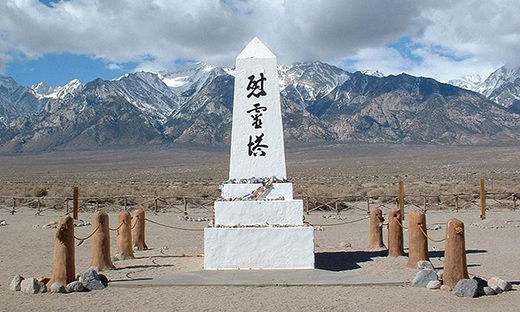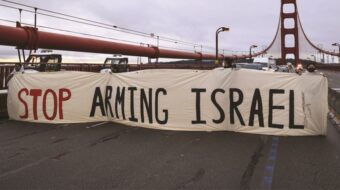
On this date in 1942, pursuant to President Franklin D. Roosevelt’s Executive Order 9066, over 127,000 Japanese Americans living in the Pacific coastal states were evacuated to ten concentration camps in remote areas of Arizona, Arkansas, Colorado, Utah, Idaho, Wyoming, and inland California. Two-thirds of them were U.S. citizens, or “Nisei,” native-born Americans, including veterans of World War I. Altogether, they lost an estimated $400 million in property (in 1942 value), which they were forced to sell off in short order. The United States had entered World War II in the immediate aftermath of the Imperial Japanese bombing of Pearl Harbor on December 7, 1941.
Some of the interns, eager to prove their American loyalty, volunteered to fight in one of two all-Nisei army regiments and went on to distinguish themselves in battle on the European front. It was one way of escaping the harsh conditions in isolated, cold, desert camps that took away the internees’ civil liberties.
One who tried to resist the government relocation action using the American legal system was Fred Korematsu, but he found little sympathy in the courts. In Korematsu v. the United States, the Supreme Court justified the executive order as a wartime necessity. The nation seemed blinded to its own race prejudice and wartime hysteria. Almost no civic organizations spoke out against it.
When they internees were allowed to return to their homes after January 2, 1945, some were able to resume their former lives with relative ease, as neighbors and friends had protected their property in their forced absence. But others suffered irreparable loss and long-lasting psychological damage, and many found they could not return to their hometowns at all owing to continuing local hostility against Japanese Americans.
In the post-war McCarthy Era, the government had camps set up to contain communists and radicals. Many people who subsequently obtained their FBI files found out that they had been designated for detention in the event of a similar new executive order. It took a long time to overcome the unconstitutional consequences of hysteria against the nation’s perceived “enemies,” and there is no guarantee that we have completely forsworn a repetition of such acts.
In 1988, Congress attempted to apologize for the 1942 evacuation by awarding each surviving intern $20,000. The U.S. government eventually disbursed more than $1.6 billion in reparations to 82,219 Japanese Americans who had been interned and their heirs. These American concentration camps remain an indelible stain on the nation.
Photo: Wikipedia (CC)
For a further introduction to this complex history click here.












Comments